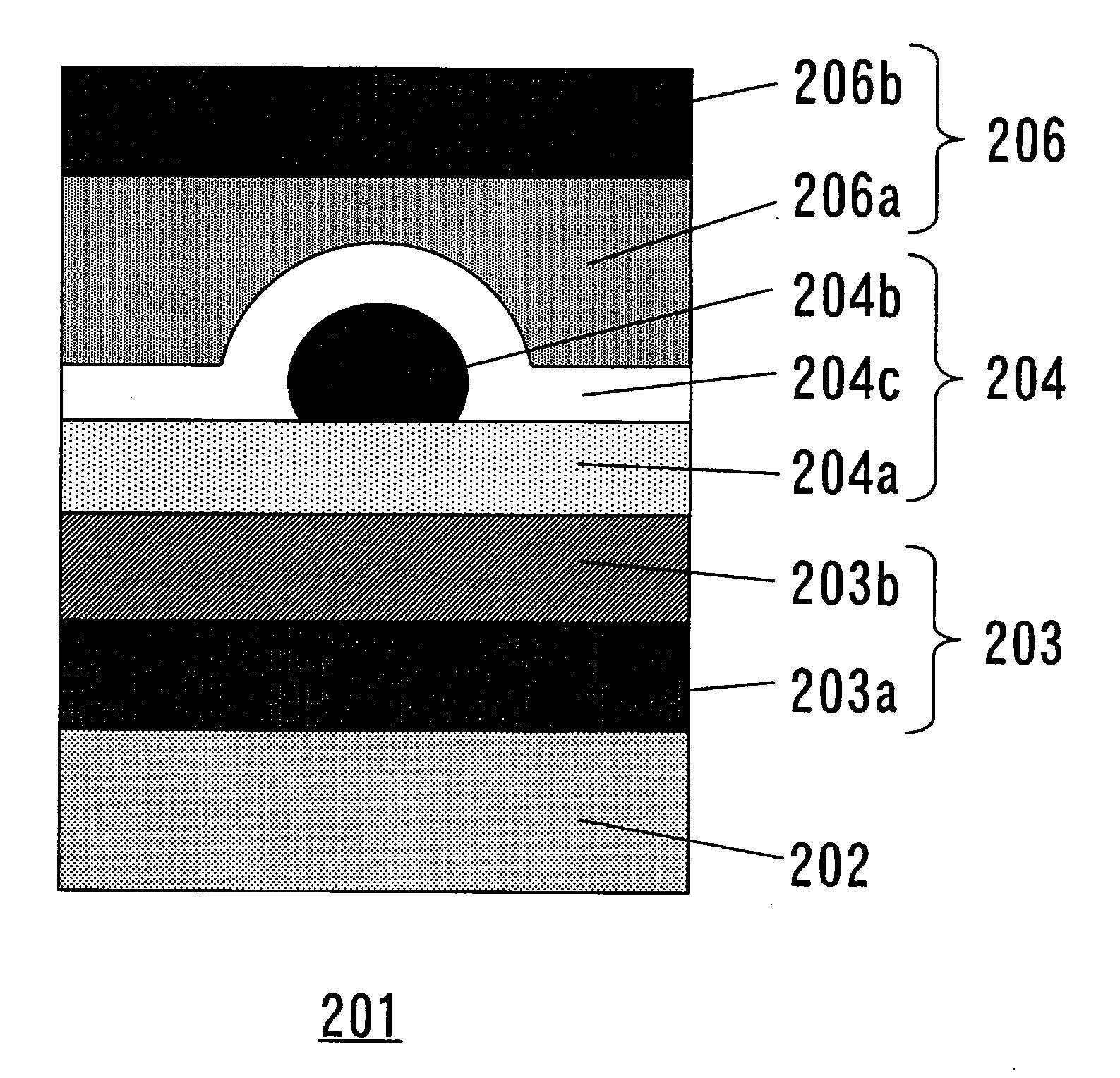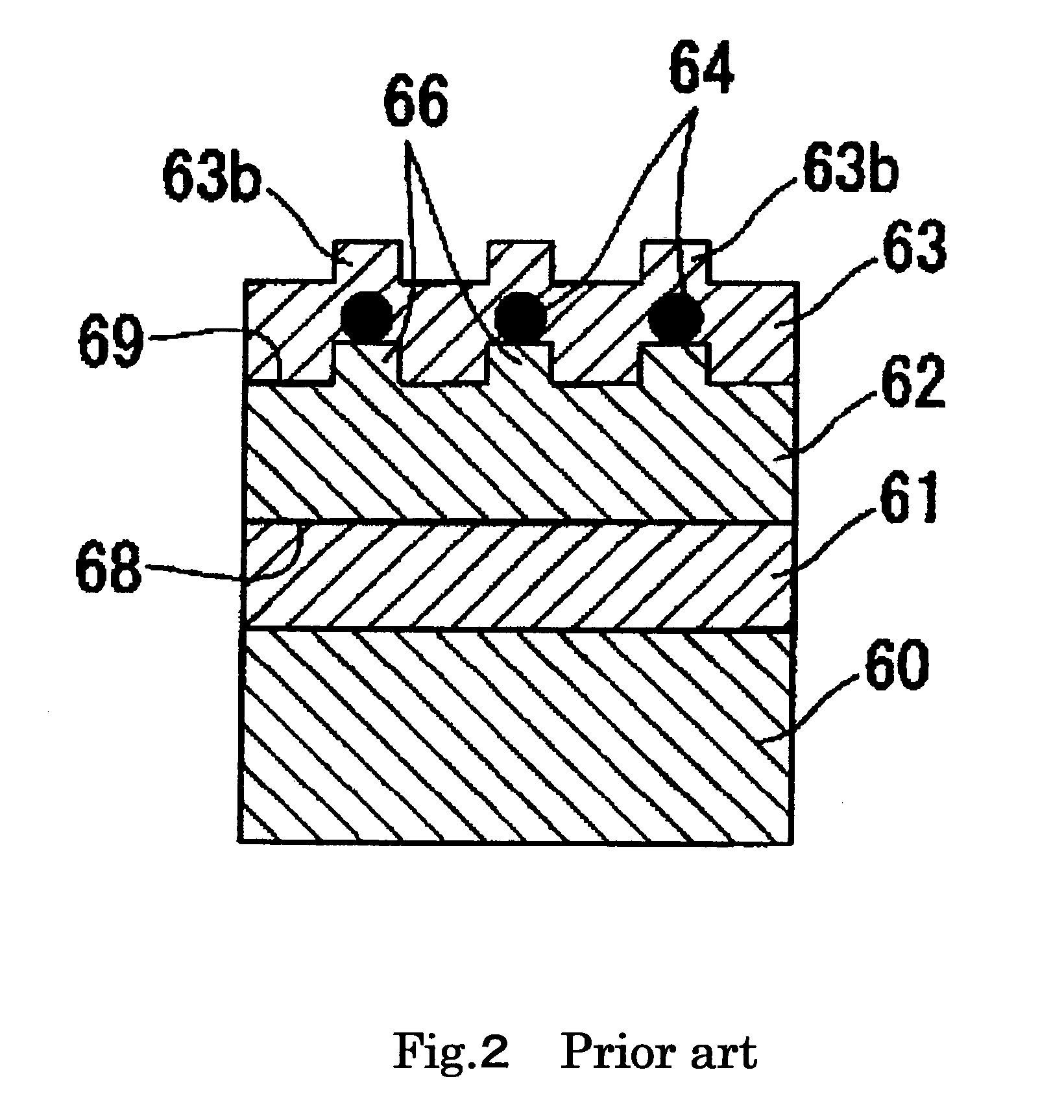Resistive nonvolatile memory element, and production method of the same
a non-volatile, memory element technology, applied in the direction of digital storage, instruments, semiconductor devices, etc., can solve the problems of increasing the variation among each element, insufficient accuracy of these process techniques, and inability to manufacture micro-fabricated elements, etc., to achieve a simple and convenient process
- Summary
- Abstract
- Description
- Claims
- Application Information
AI Technical Summary
Benefits of technology
Problems solved by technology
Method used
Image
Examples
embodiments
[0063]The method for production of a resistive nonvolatile memory element of the present invention is first explained.
[0064]In this Embodiment, as shown in FIG. 6 and FIG. 7, after first electrode 203 is formed on the surface of substrate 202 in the “first electrode formation step” (FIG. 7(a)), oxide semiconductor layer 204a the resistance of which is altered depending on the applied voltage is formed on the first electrode 203 in an “oxide semiconductor layer formation step” (FIG. 7(b)); ferritin 205 constituted with metal compound core 205a and protein 205b on the external side thereof is arranged on the oxide semiconductor layer 204a in a “ferritin arranging step” (FIG. 7(c)); protein 205b on the external side of the ferritin 205 is removed to modify the metal compound core 205a into metal nanoparticle 204b in a “protein removal and core modification step” (FIG. 7(d)); tunnel barrier layer 204c is formed on the oxide semiconductor layer 204a and on the metal nanoparticles 204b in...
example 1
[0089]Hereinafter, a method for production of the resistive nonvolatile memory element of the Example 1 is explained in detail.
[0090]Introduction of Gold Sulfide Core into Apoferritin
[0091]Operation for introducing a gold sulfide core into a cavity inside apoferritin is first explained below.
[0092]First, 17 mg of thiourea was added to 1 mL of a 20 mM potassium chloroaurate (KAuCl4) solution, followed by mixing.
[0093]Several minutes later, thus yielded yellowish solution of an Au (III) ion was turned to a colorless transparent solution of a Au (I)-thiourea complex, and the solution was adjusted to a 20 mM gold thiourea complex solution.
[0094]Next, in a phosphate buffer (pH 8), a solution of purified apoferritin derived from horse, and the aforementioned gold thiourea complex solution were mixed.
[0095]In this step, the resultant final mixed solution was adjusted to have a phosphate buffer concentration of 50 mM, a thiourea concentration of 3 mM, and a concentration of apoferritin deri...
PUM
 Login to view more
Login to view more Abstract
Description
Claims
Application Information
 Login to view more
Login to view more - R&D Engineer
- R&D Manager
- IP Professional
- Industry Leading Data Capabilities
- Powerful AI technology
- Patent DNA Extraction
Browse by: Latest US Patents, China's latest patents, Technical Efficacy Thesaurus, Application Domain, Technology Topic.
© 2024 PatSnap. All rights reserved.Legal|Privacy policy|Modern Slavery Act Transparency Statement|Sitemap



